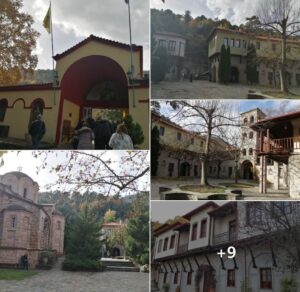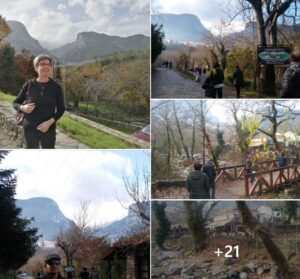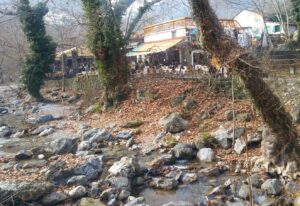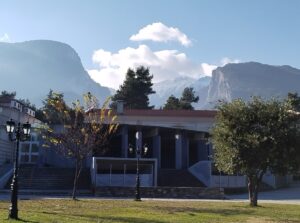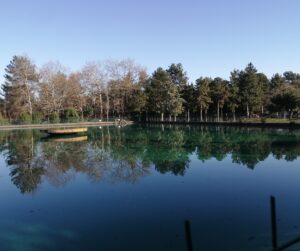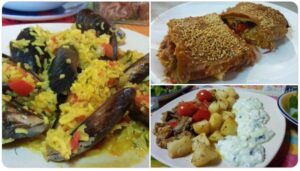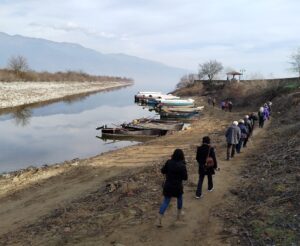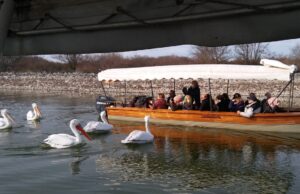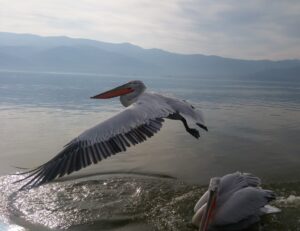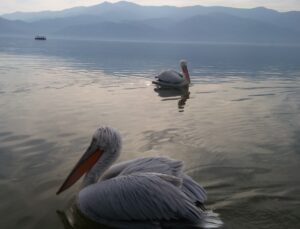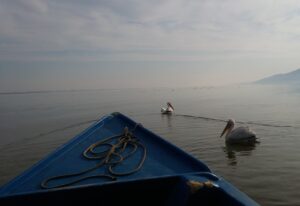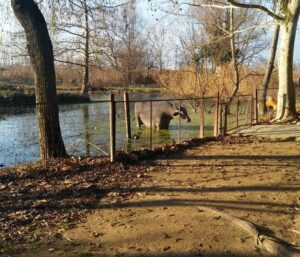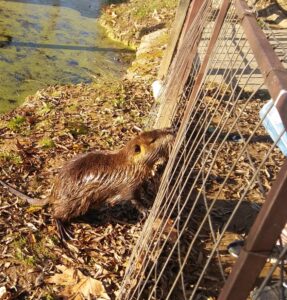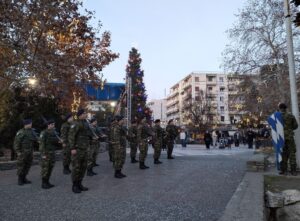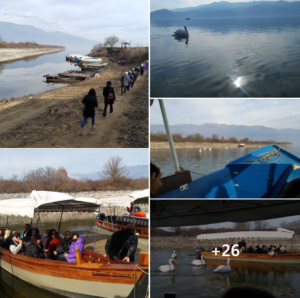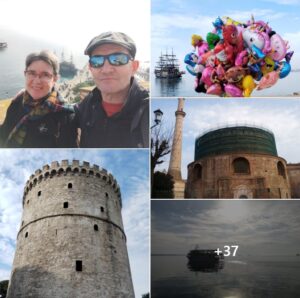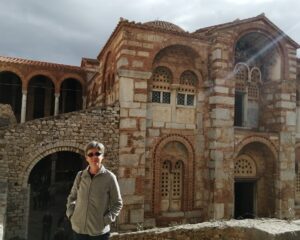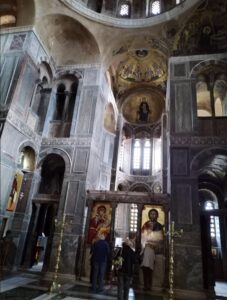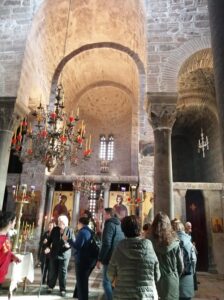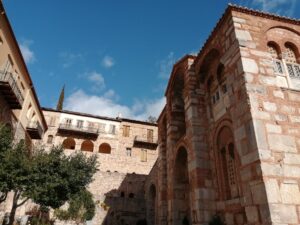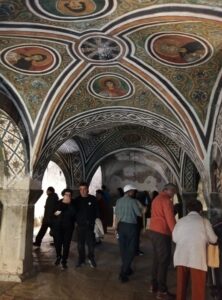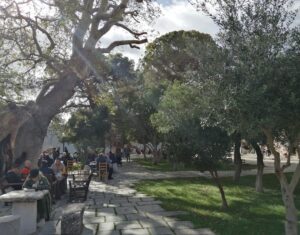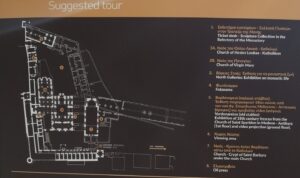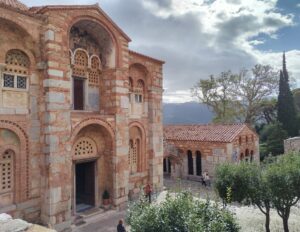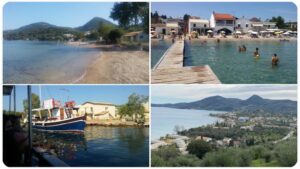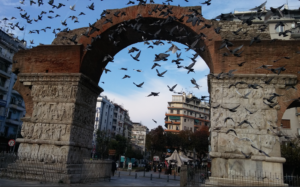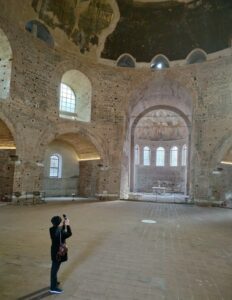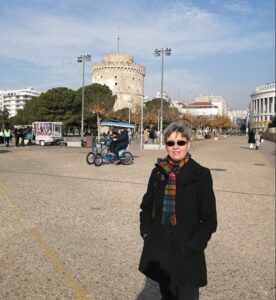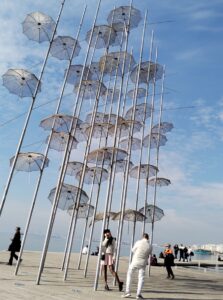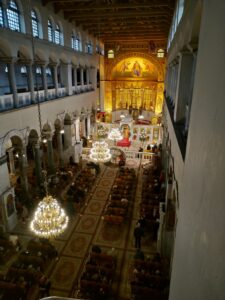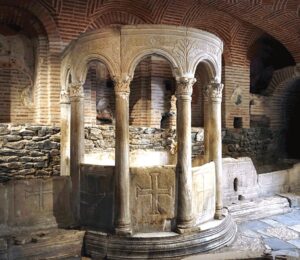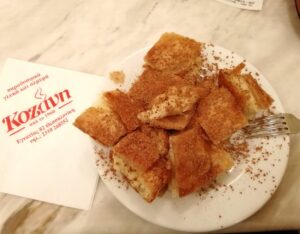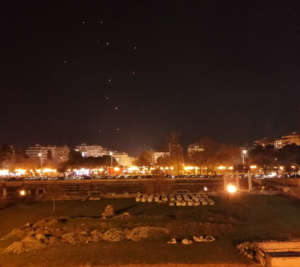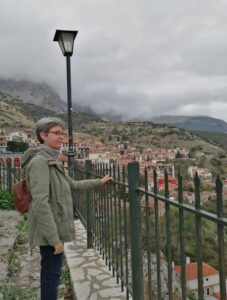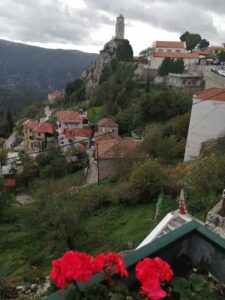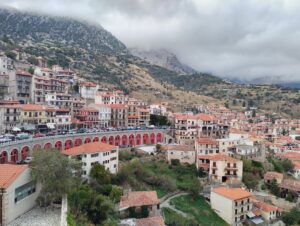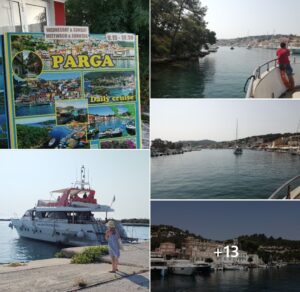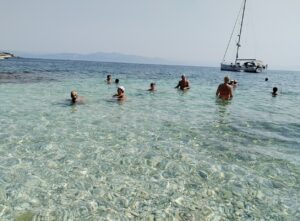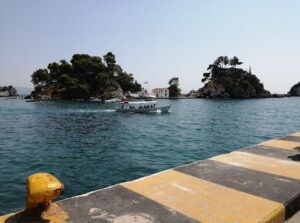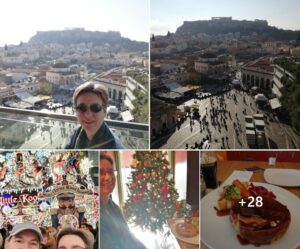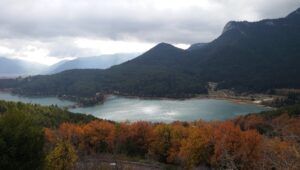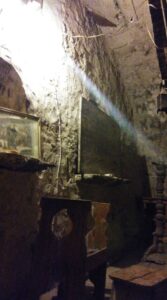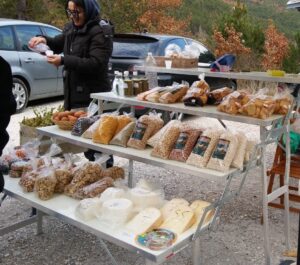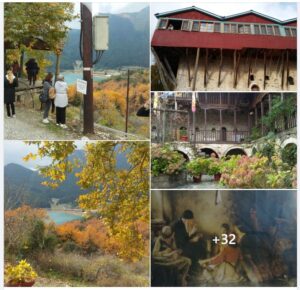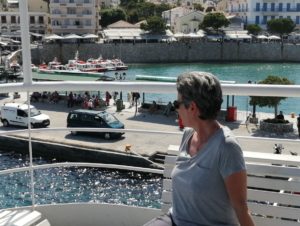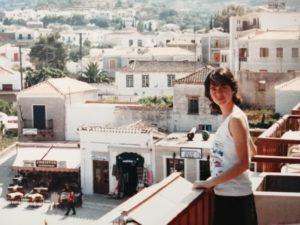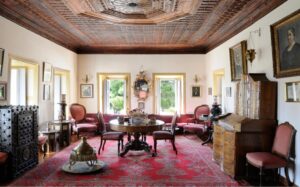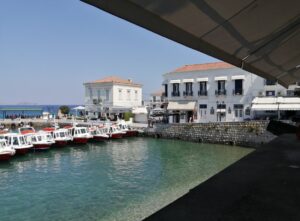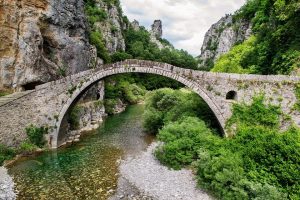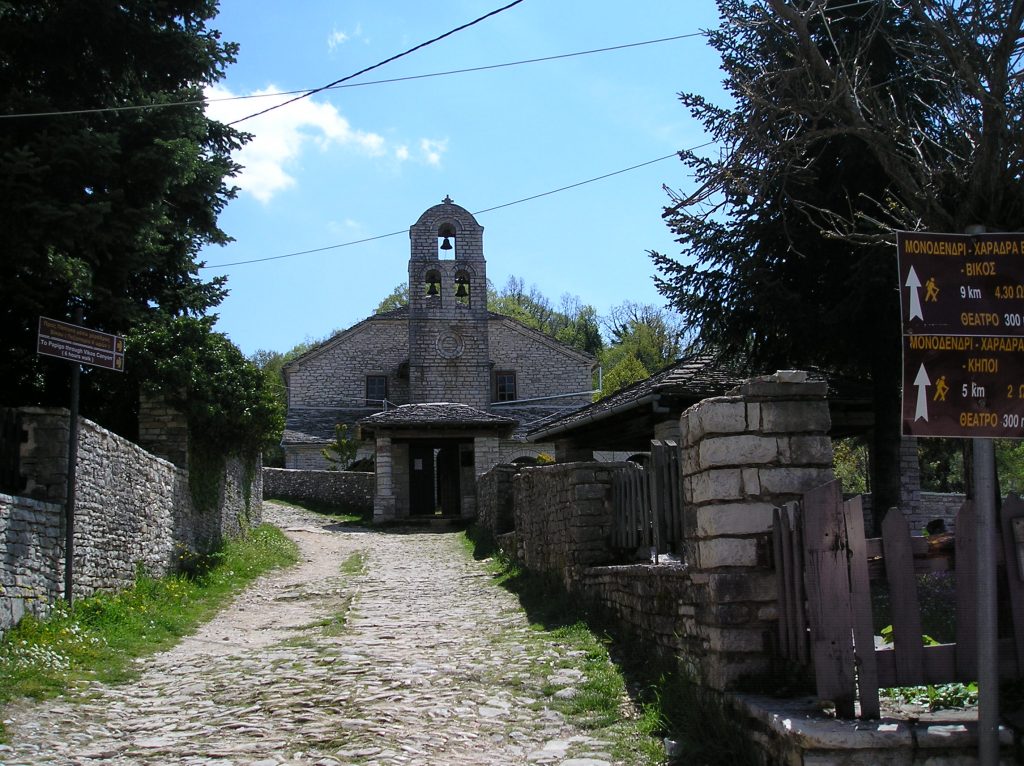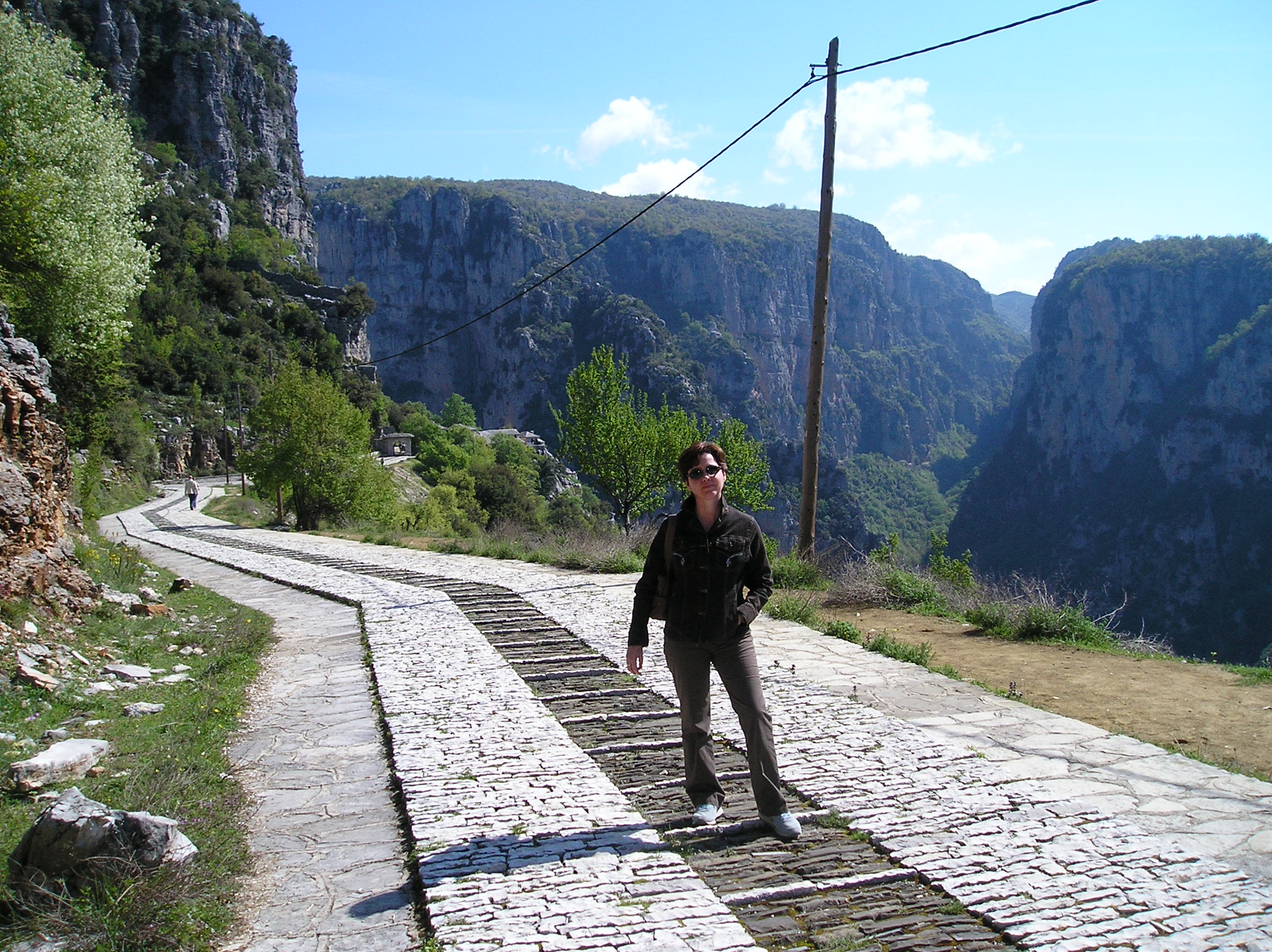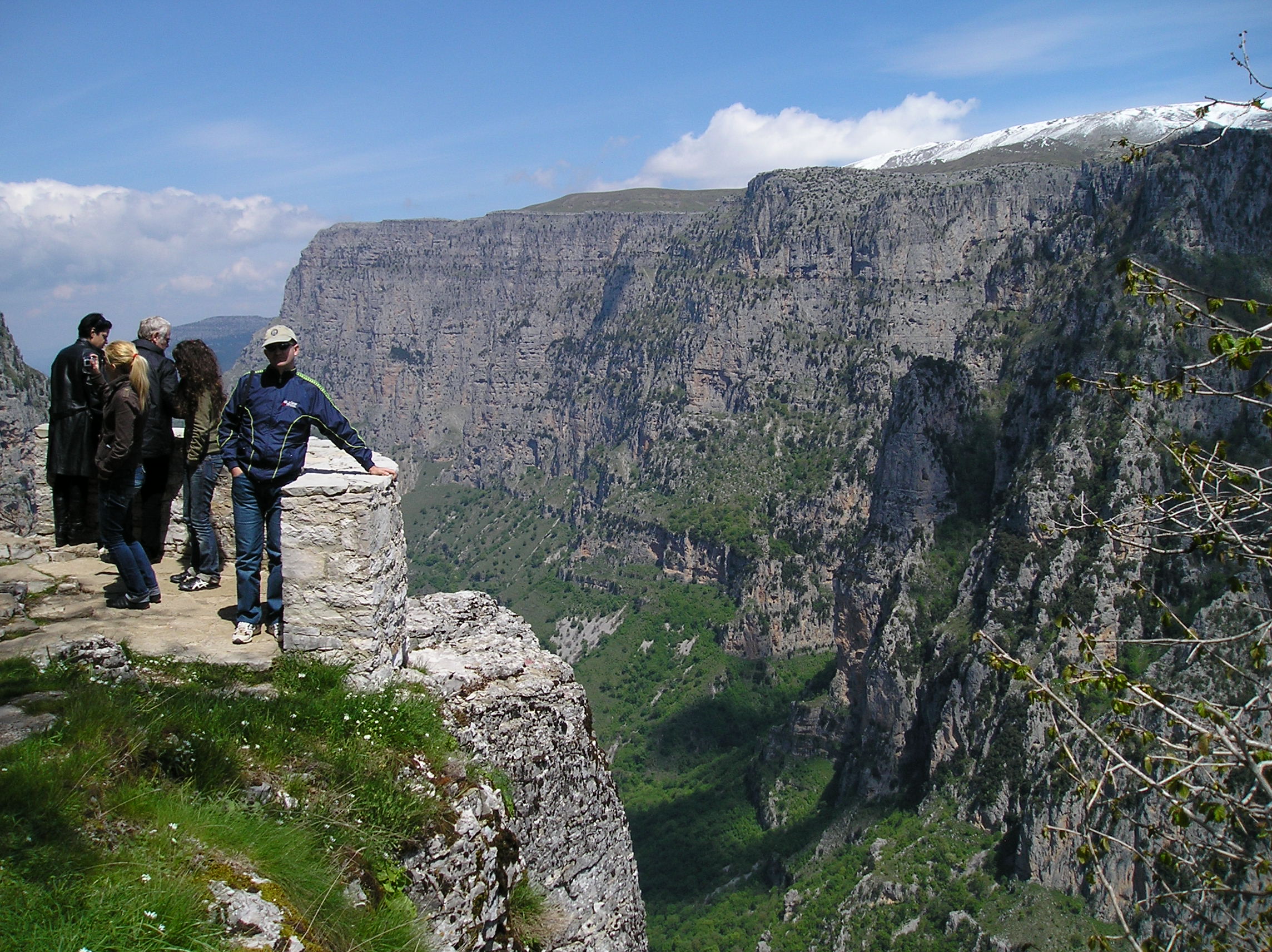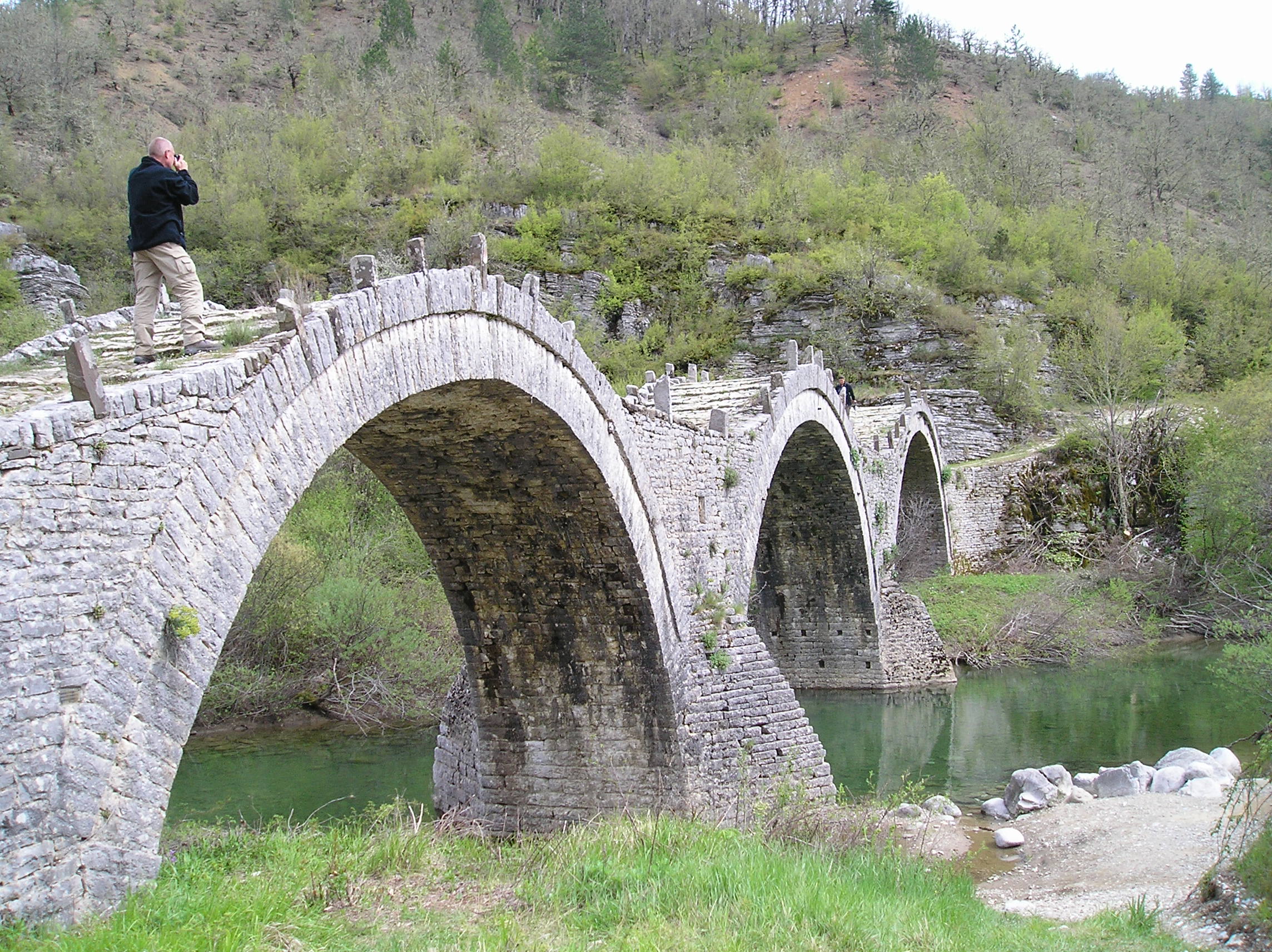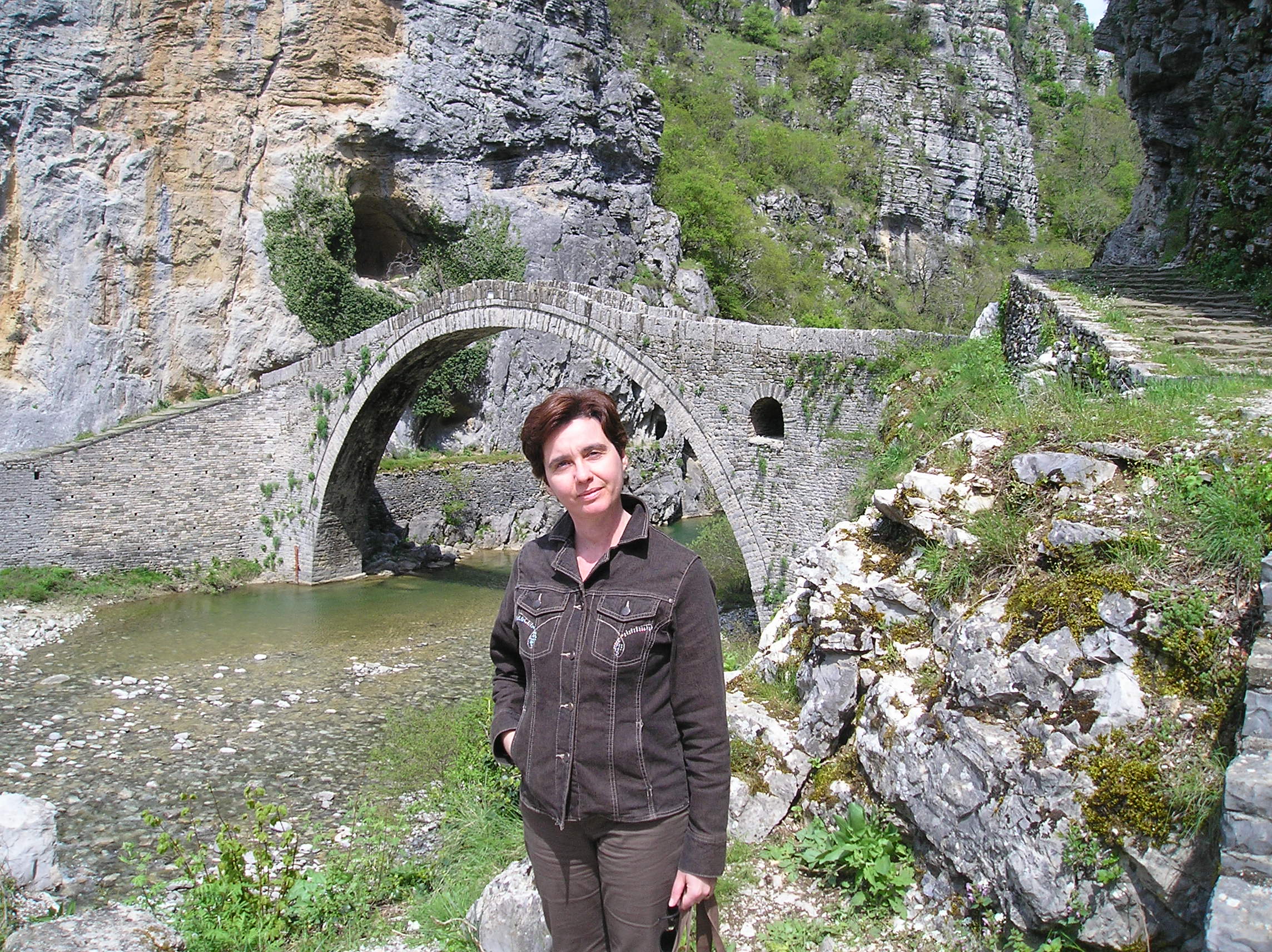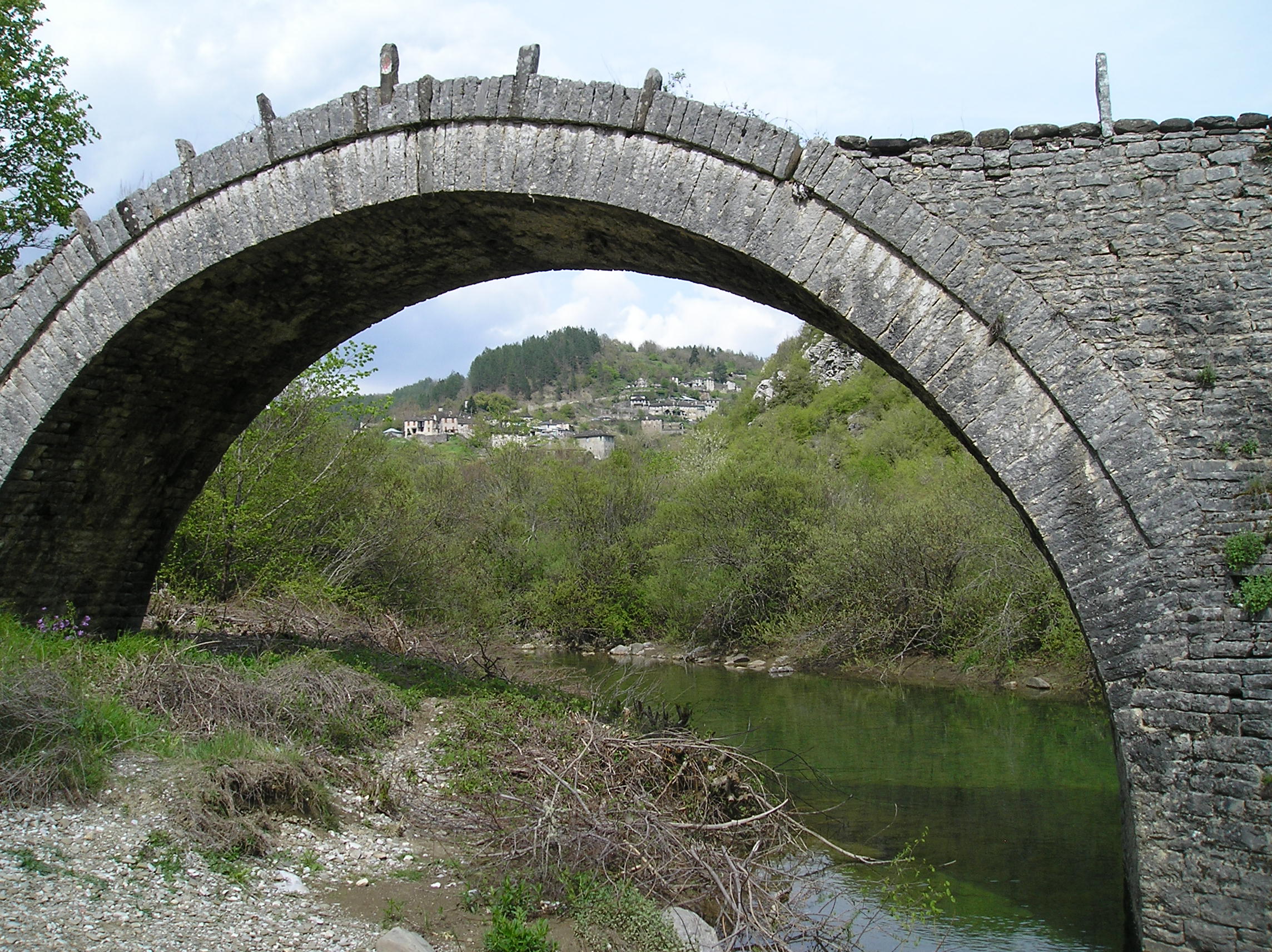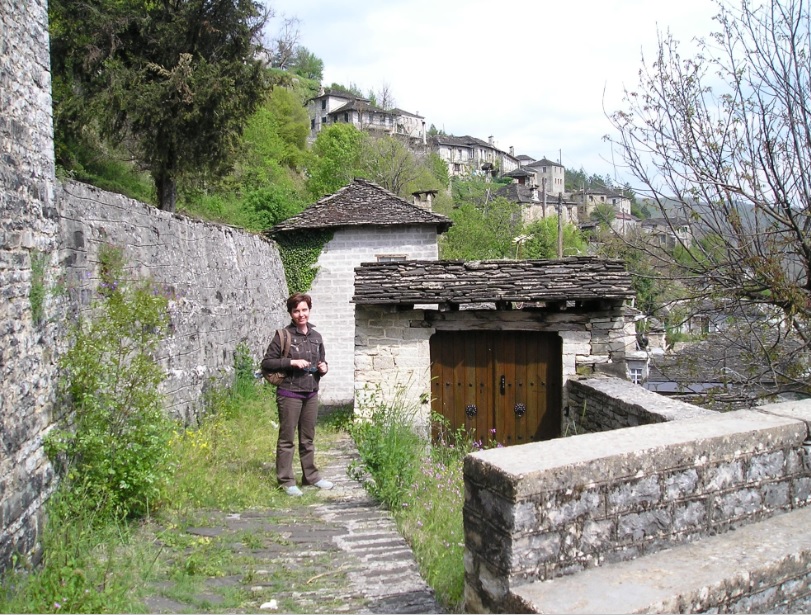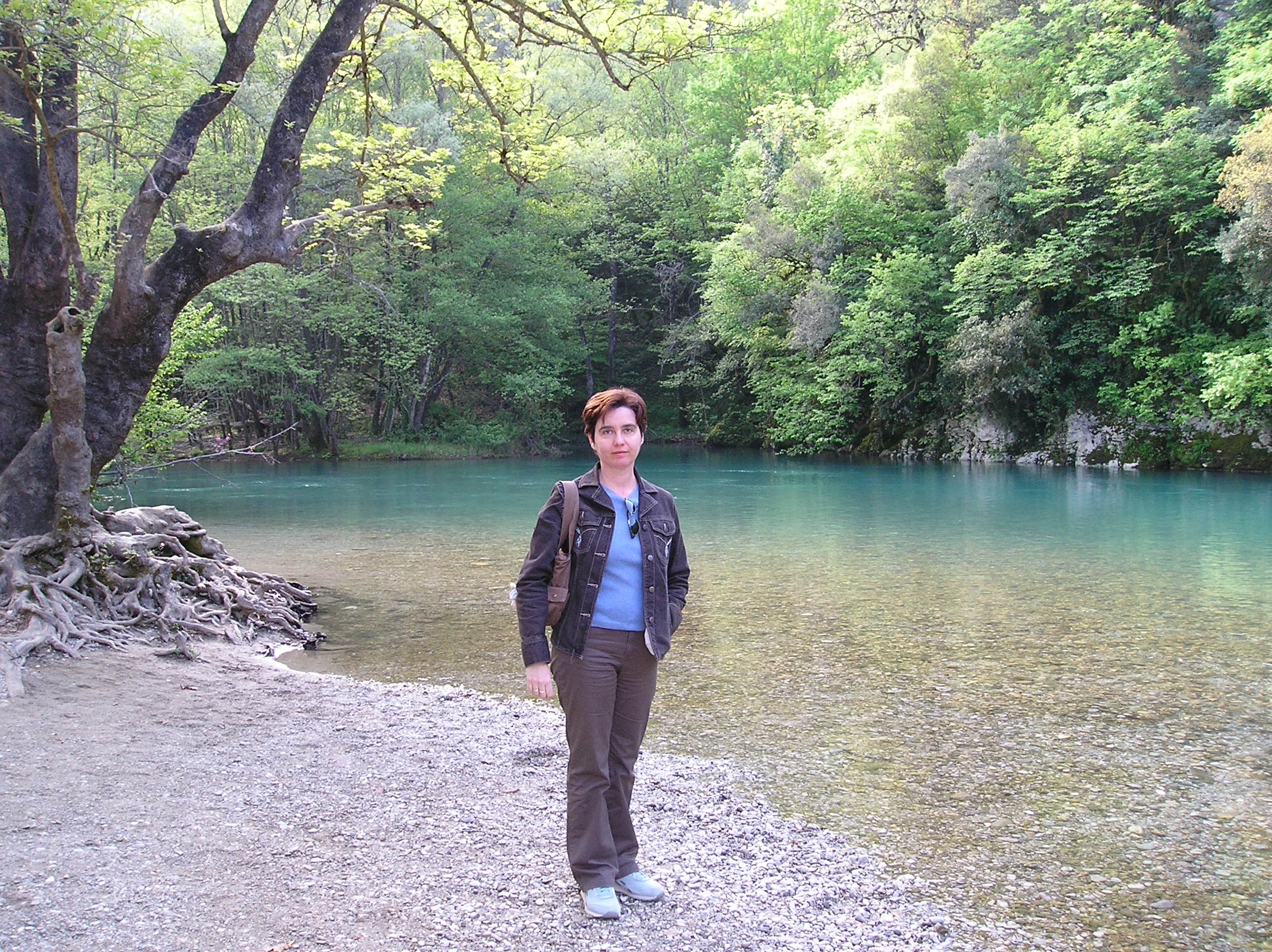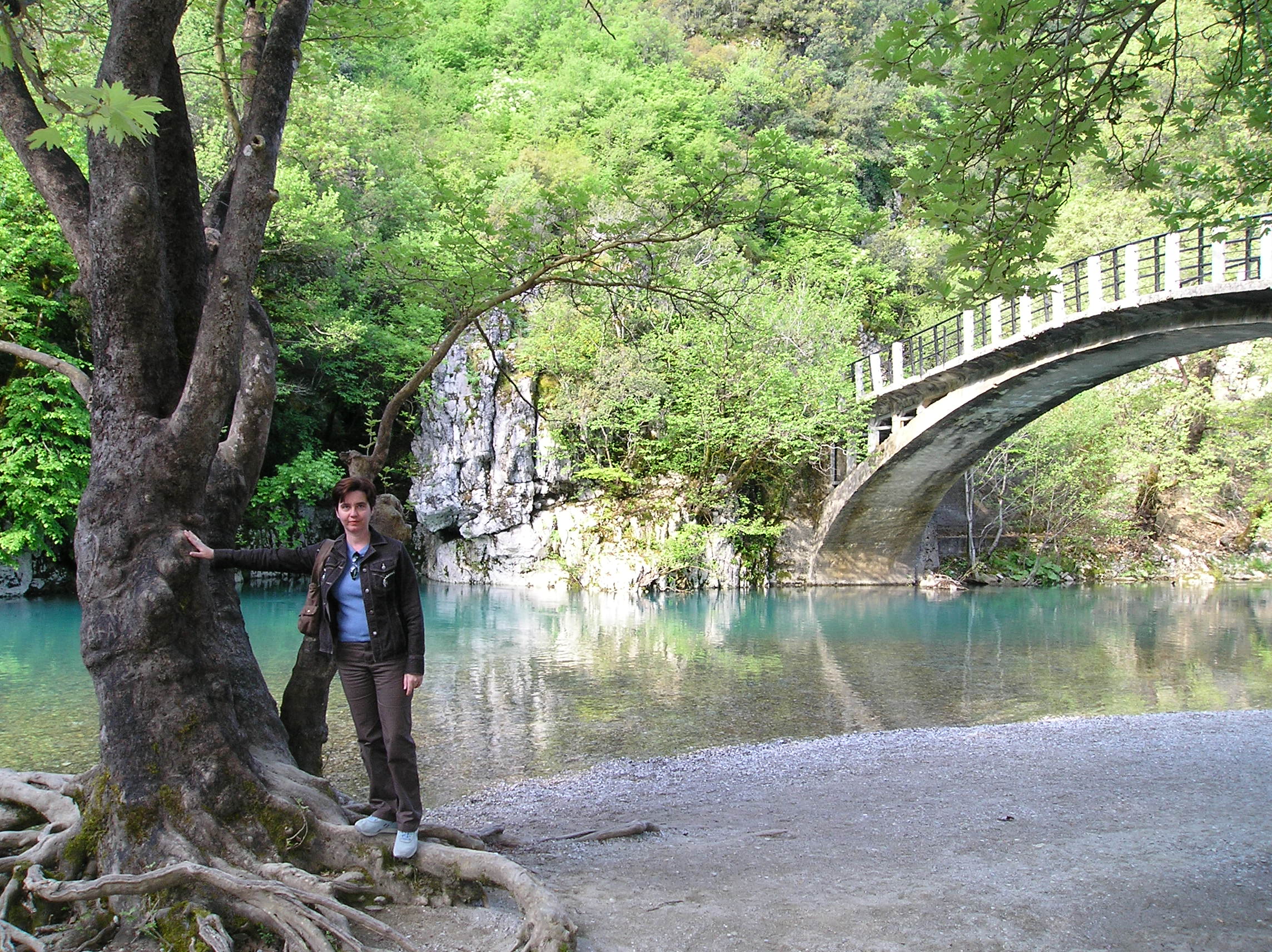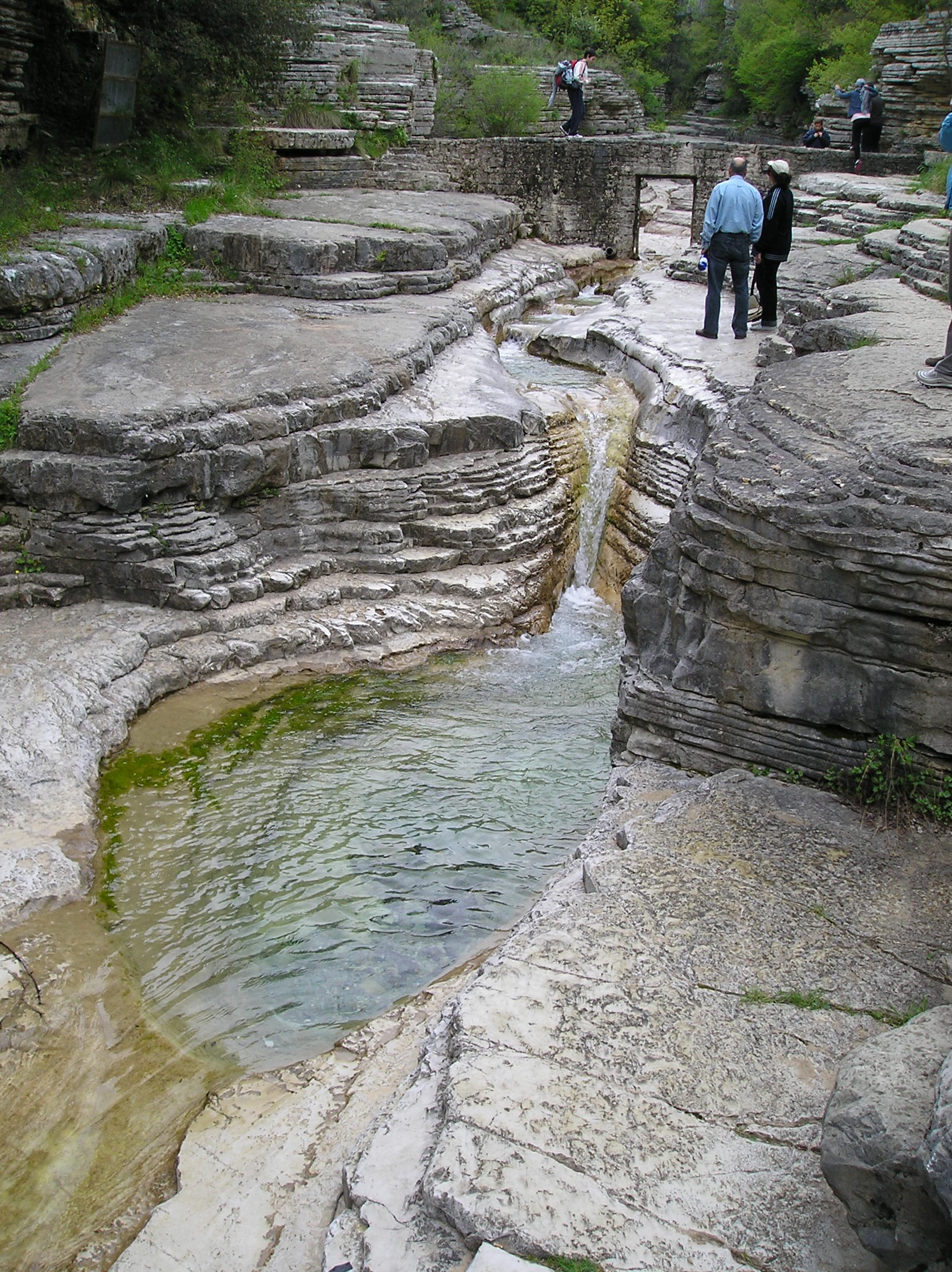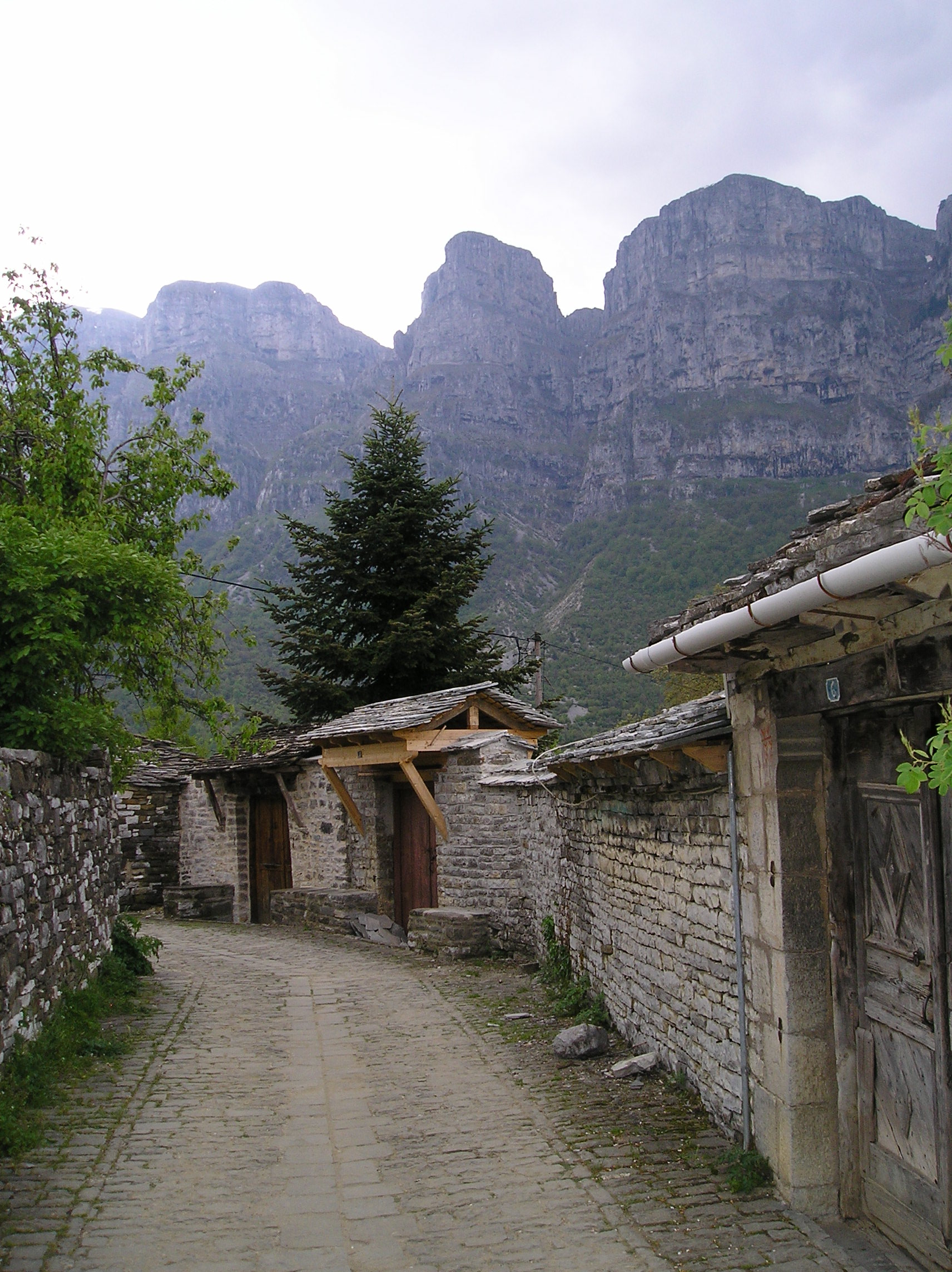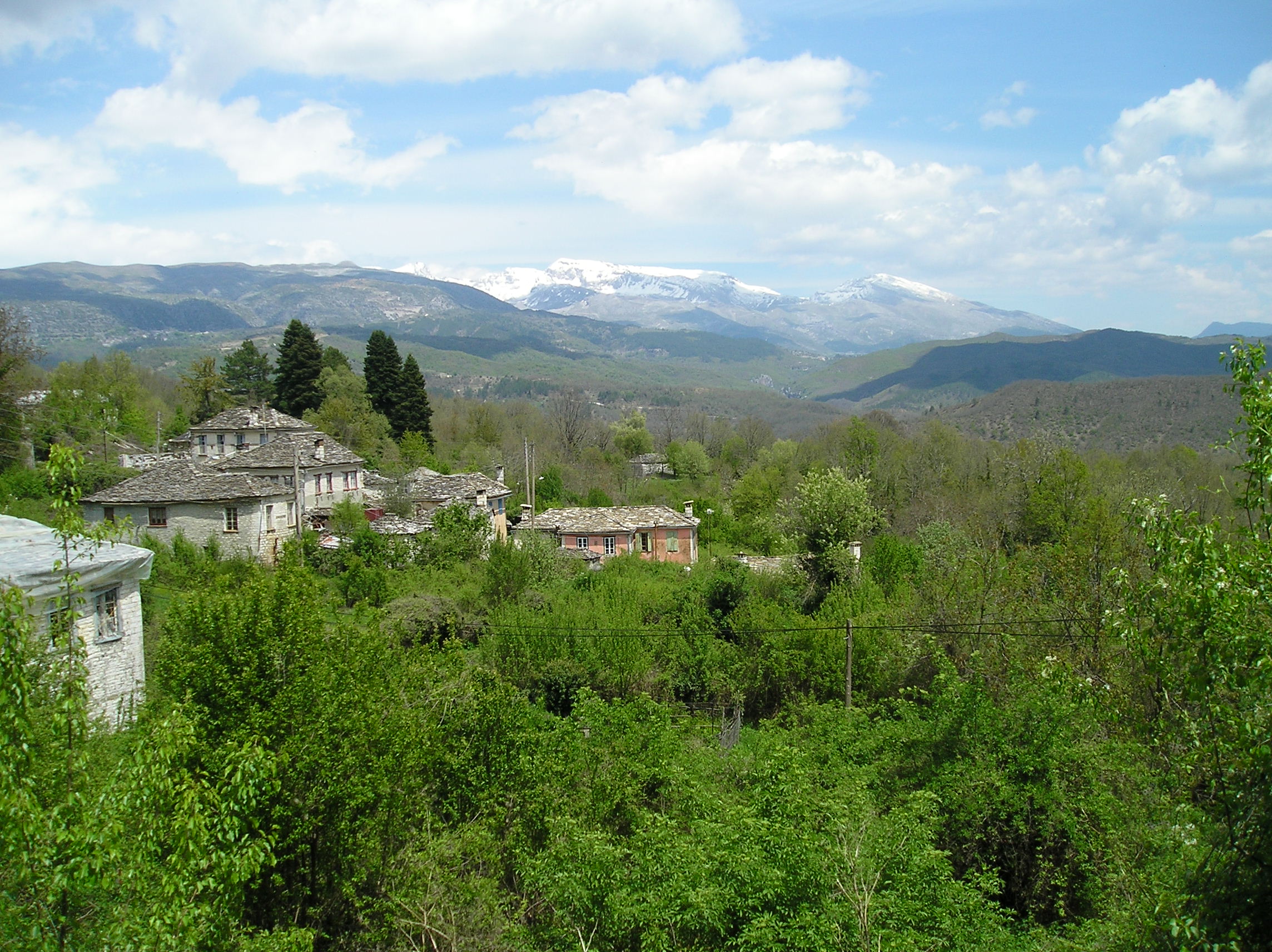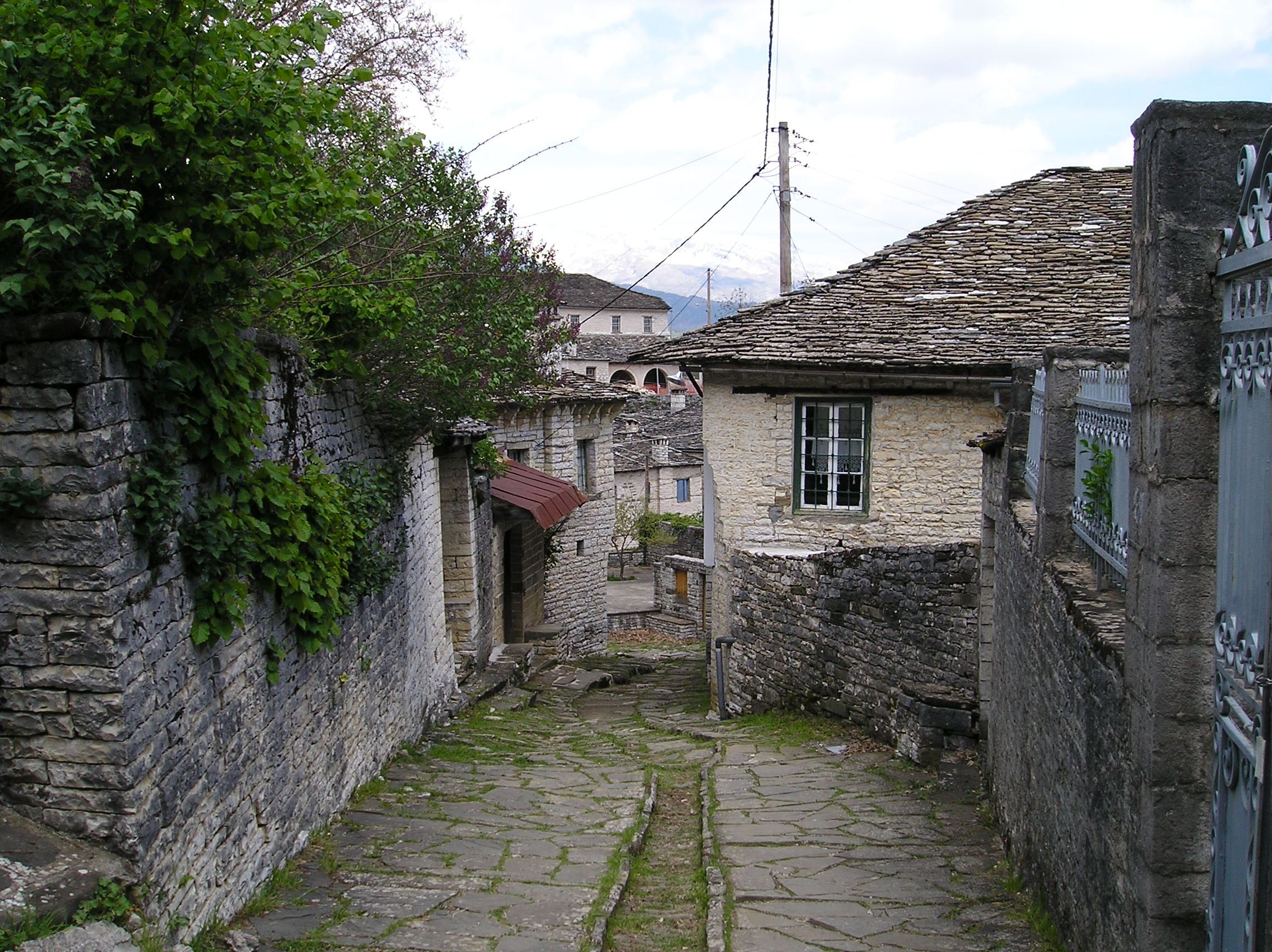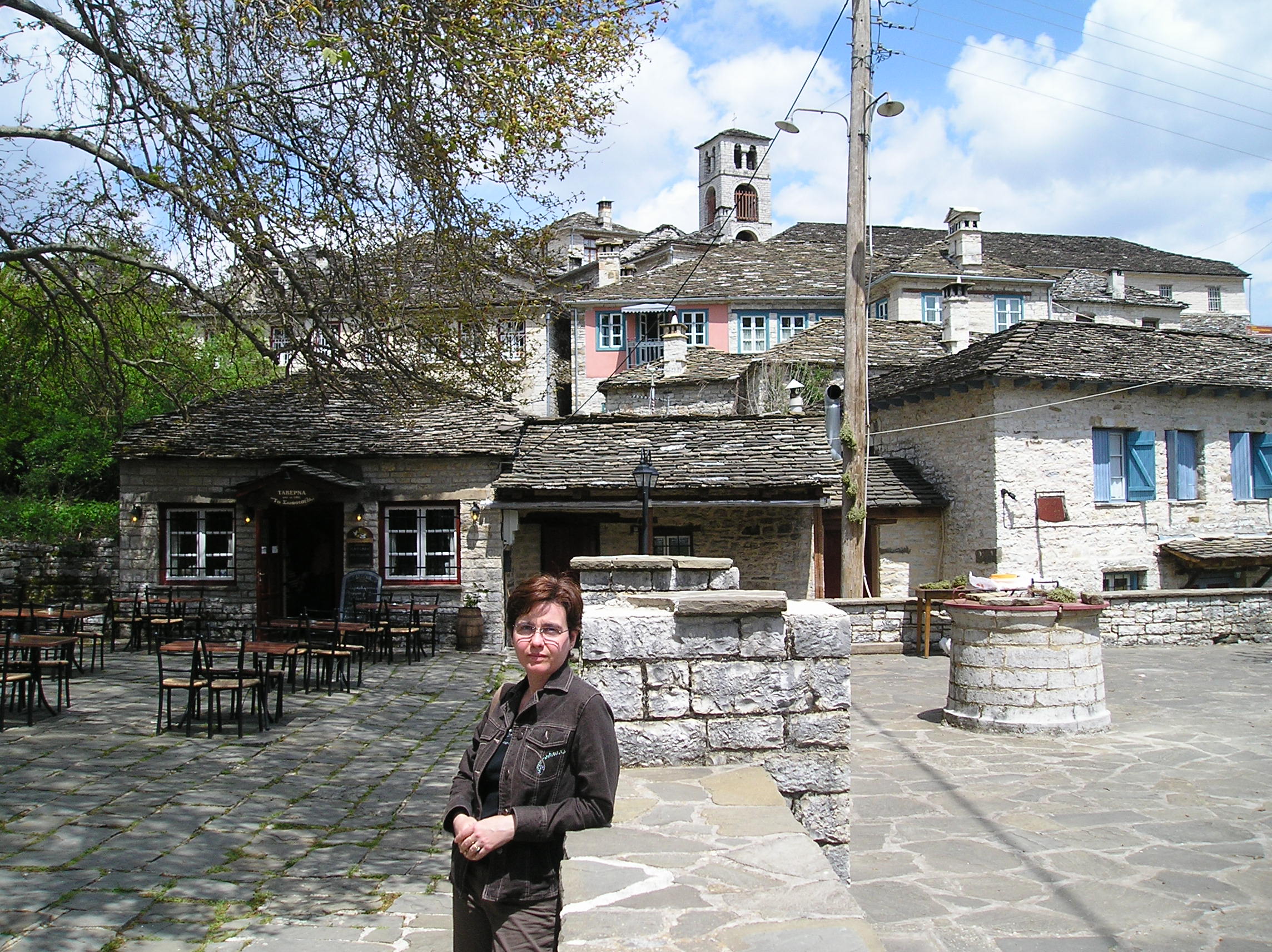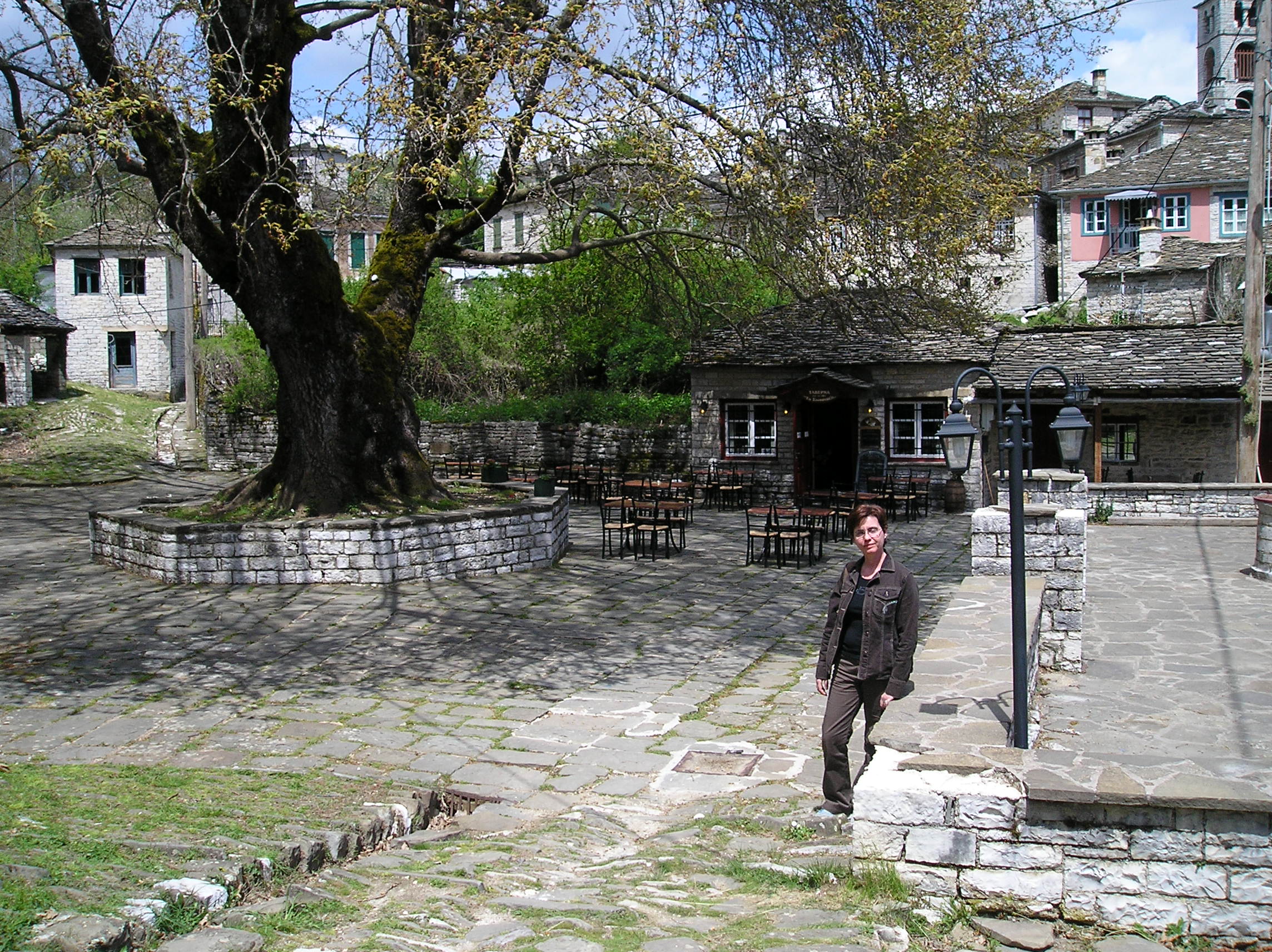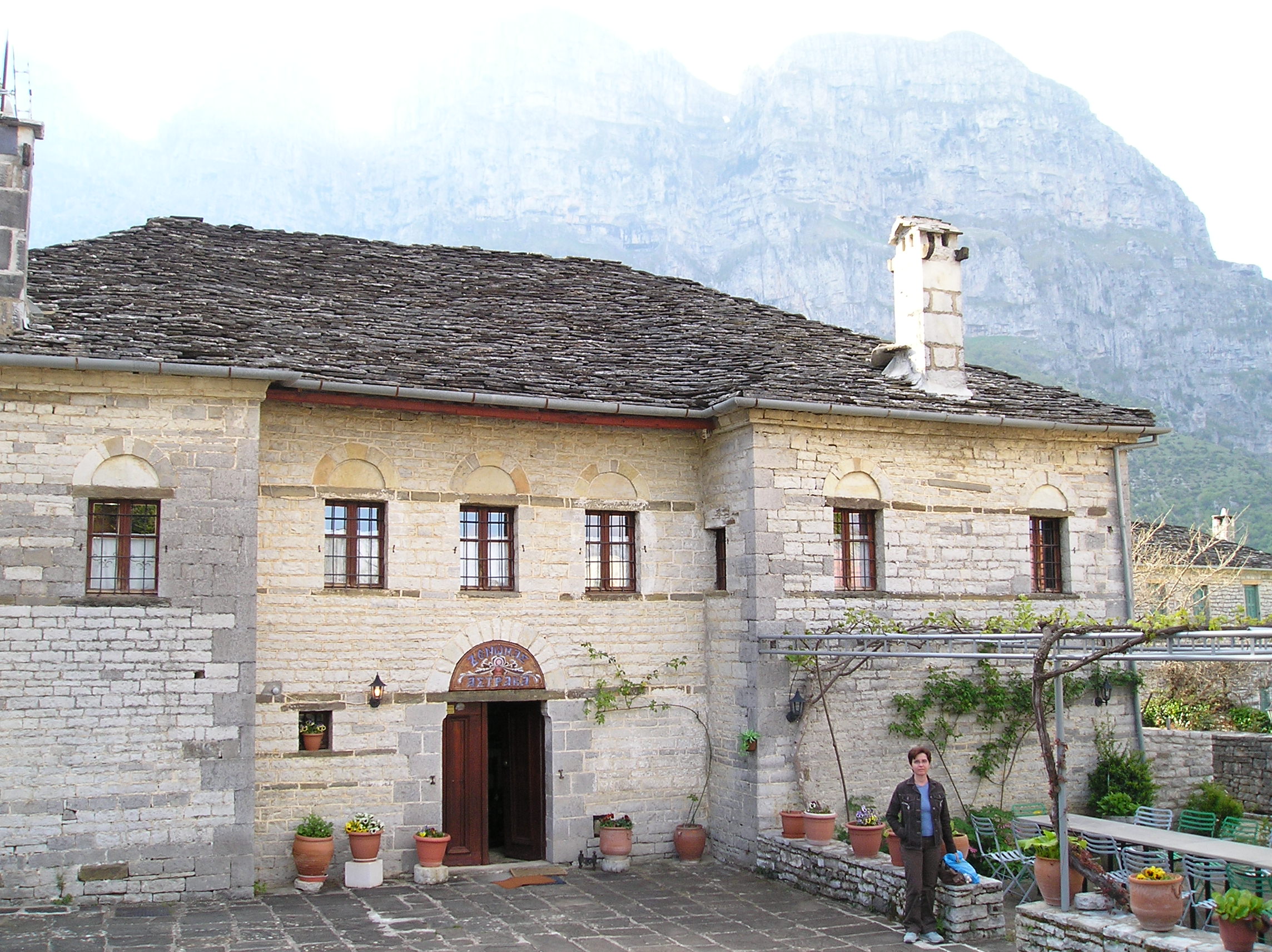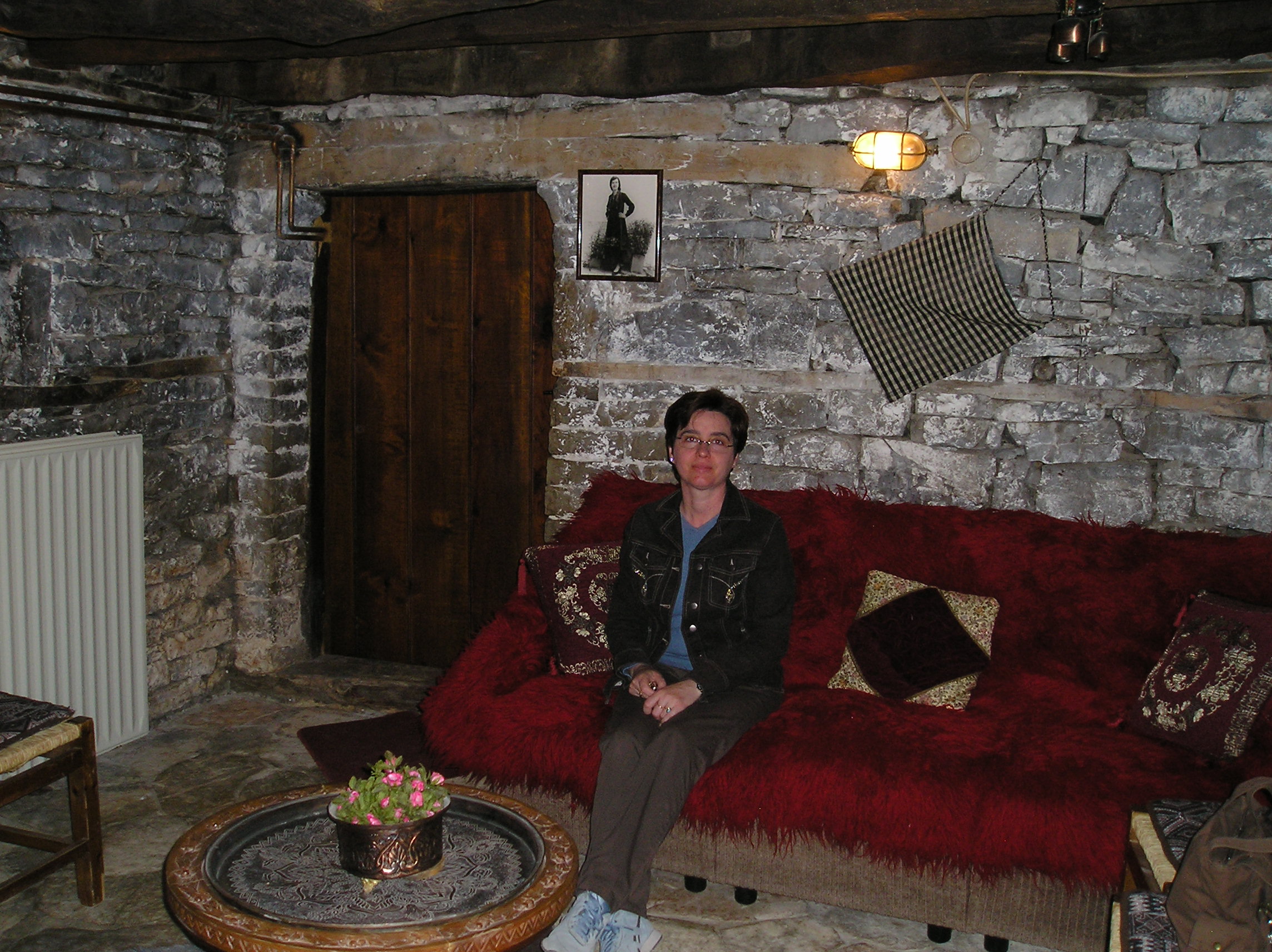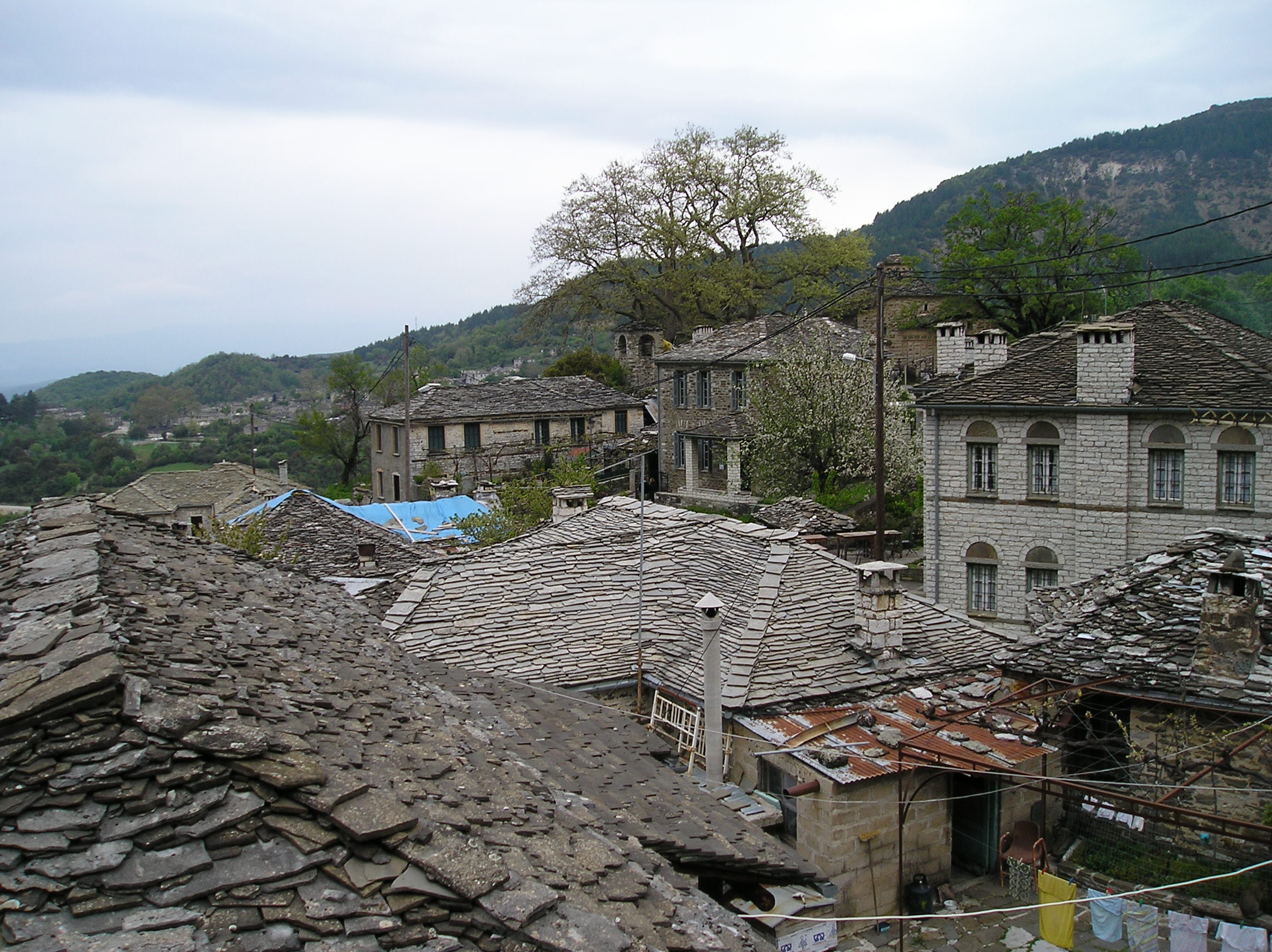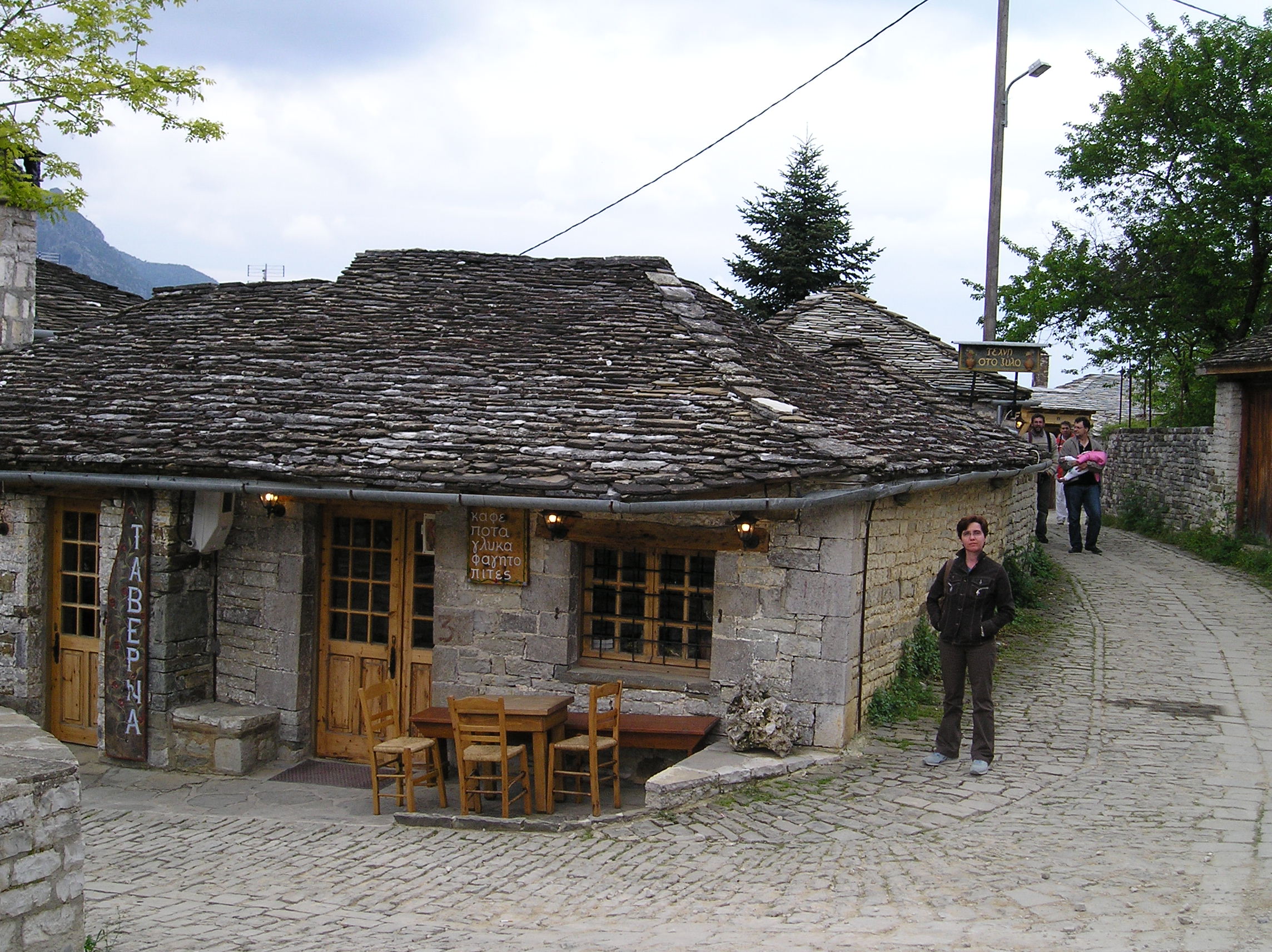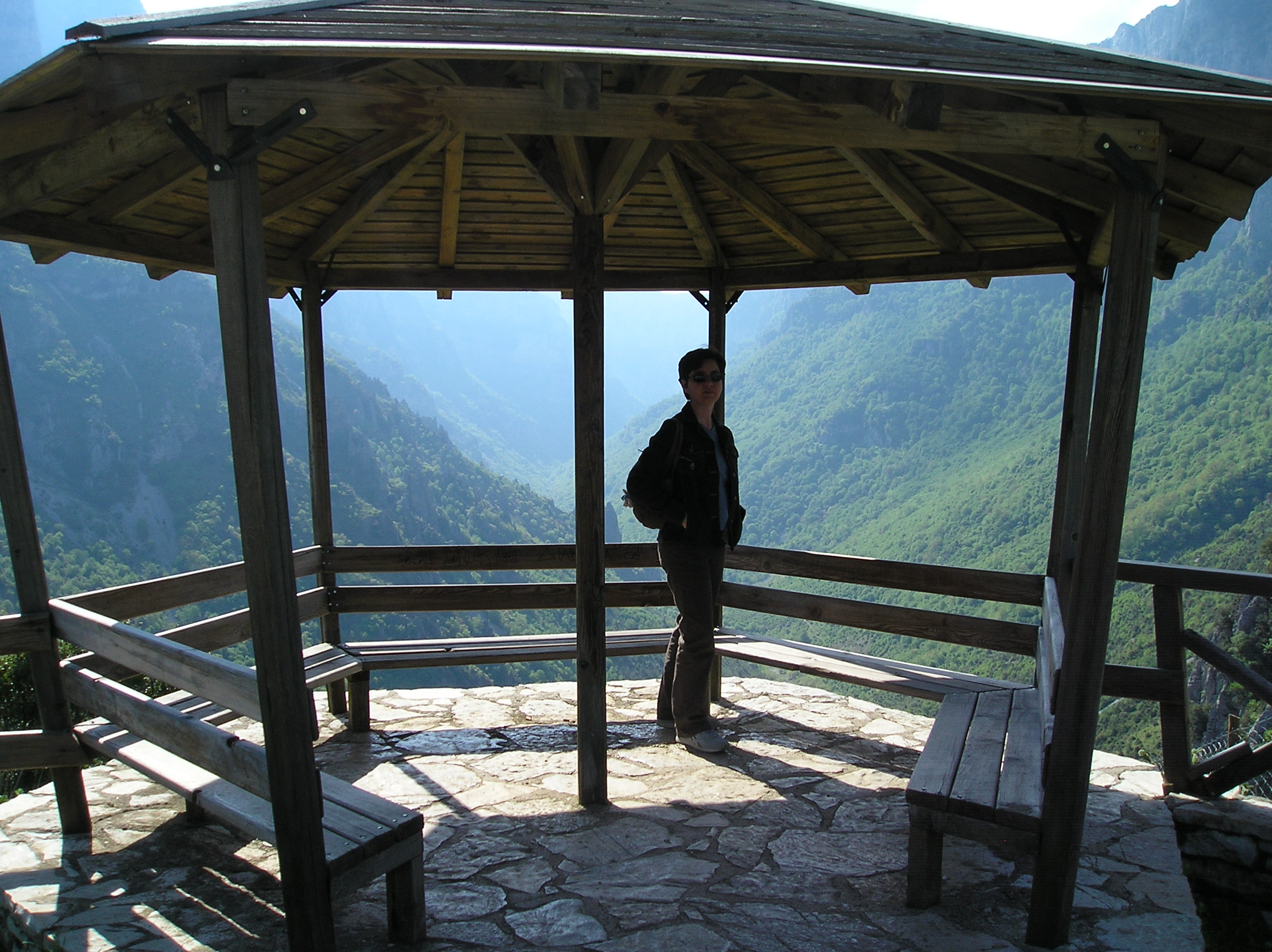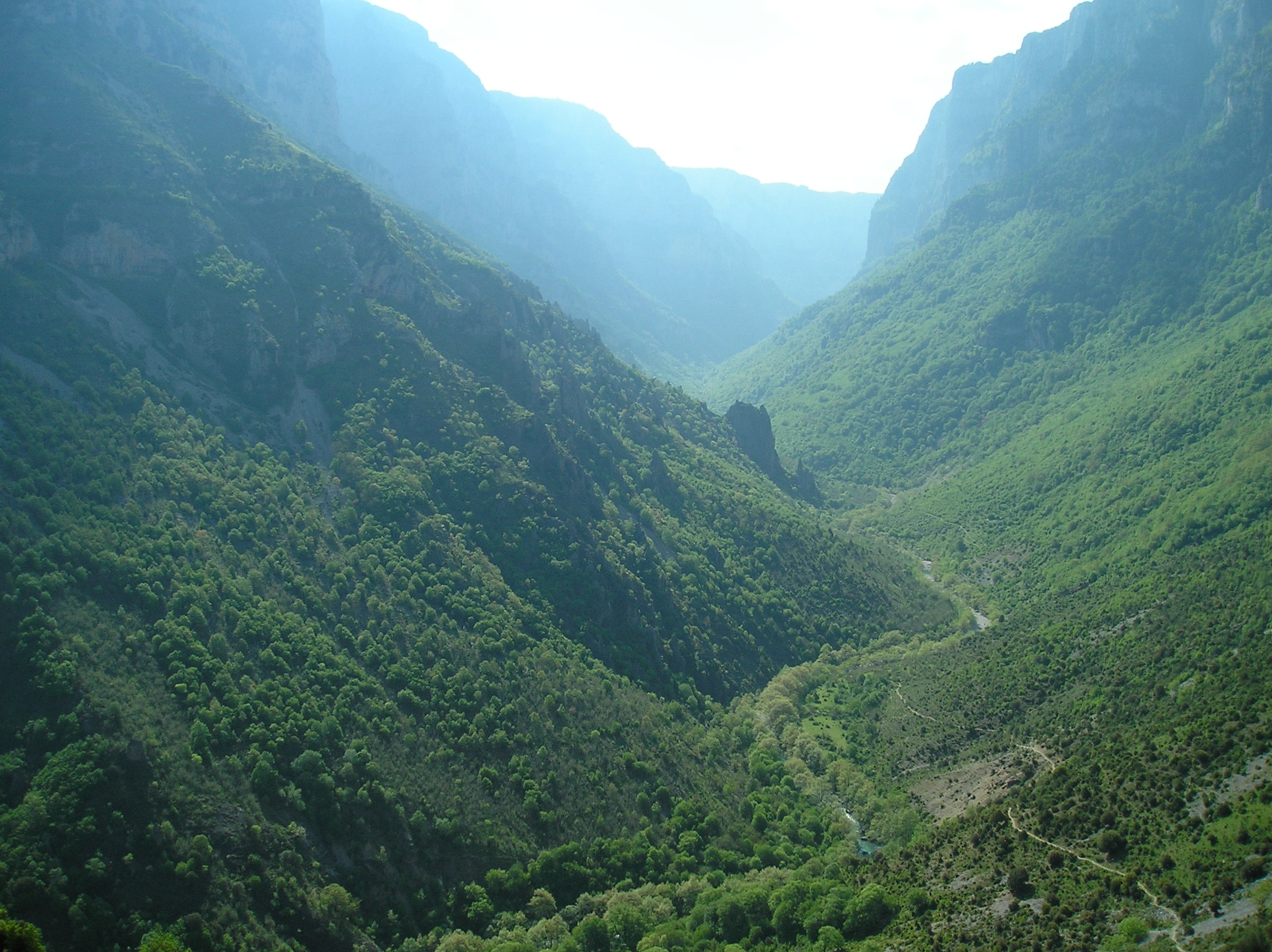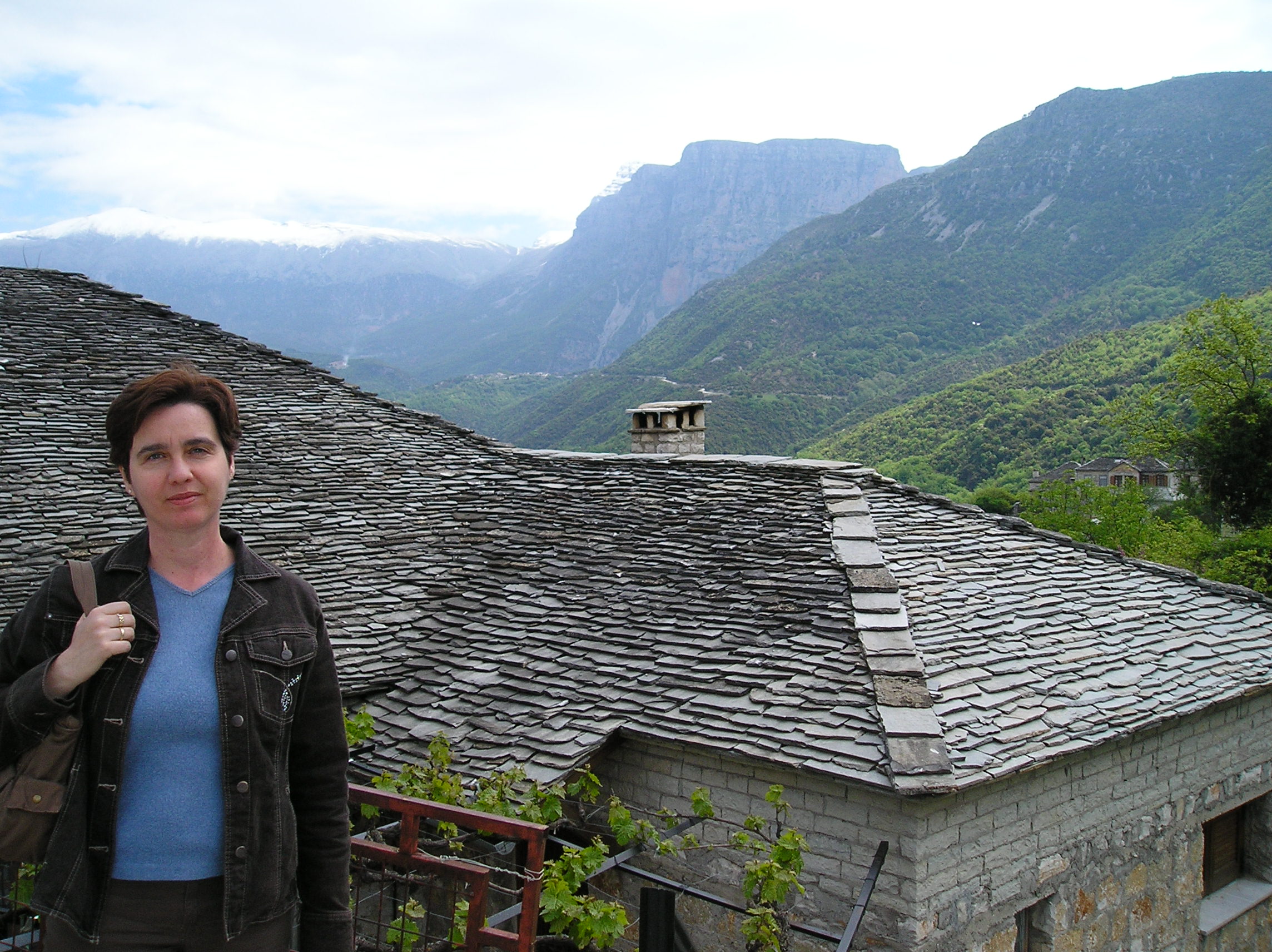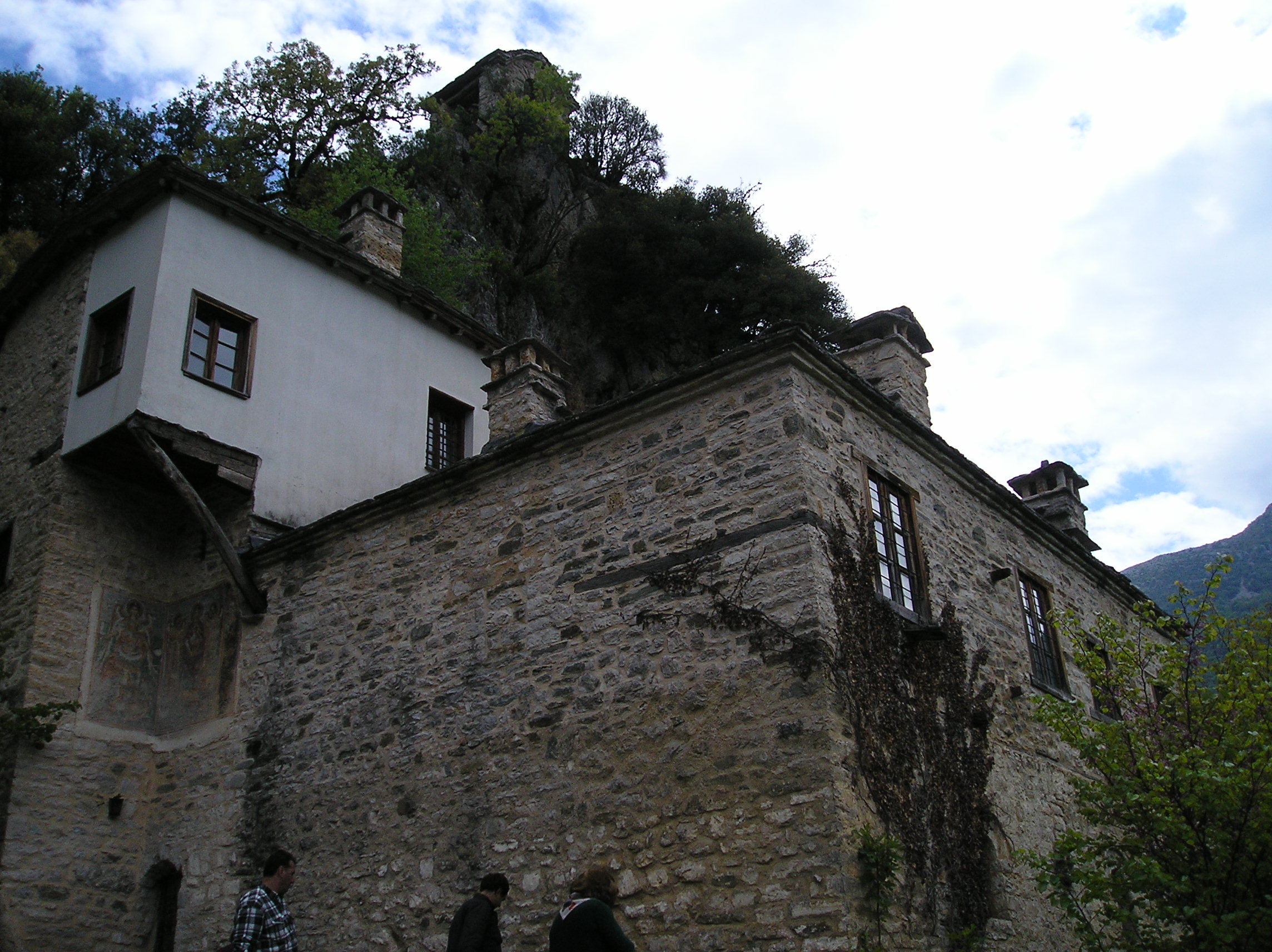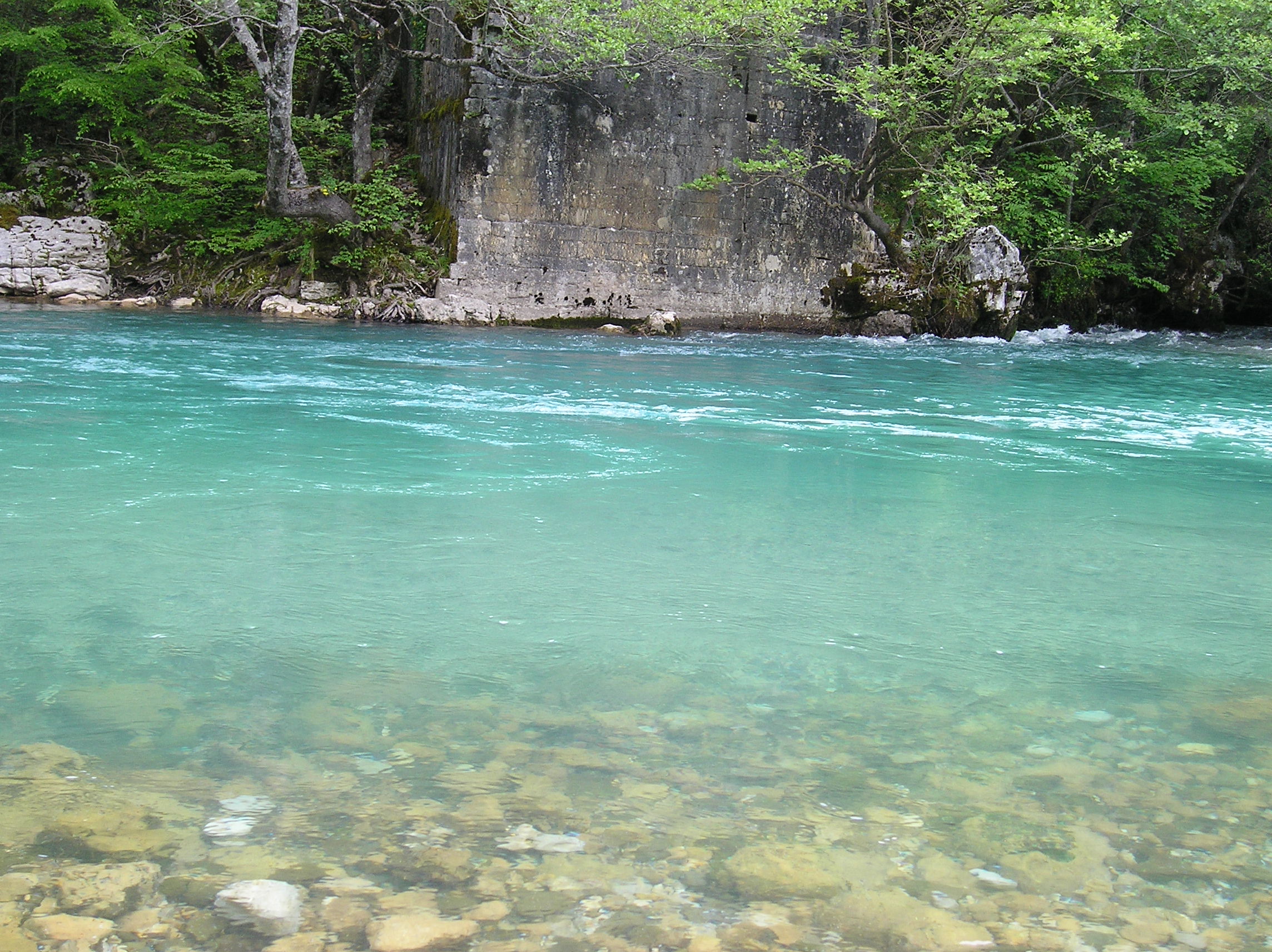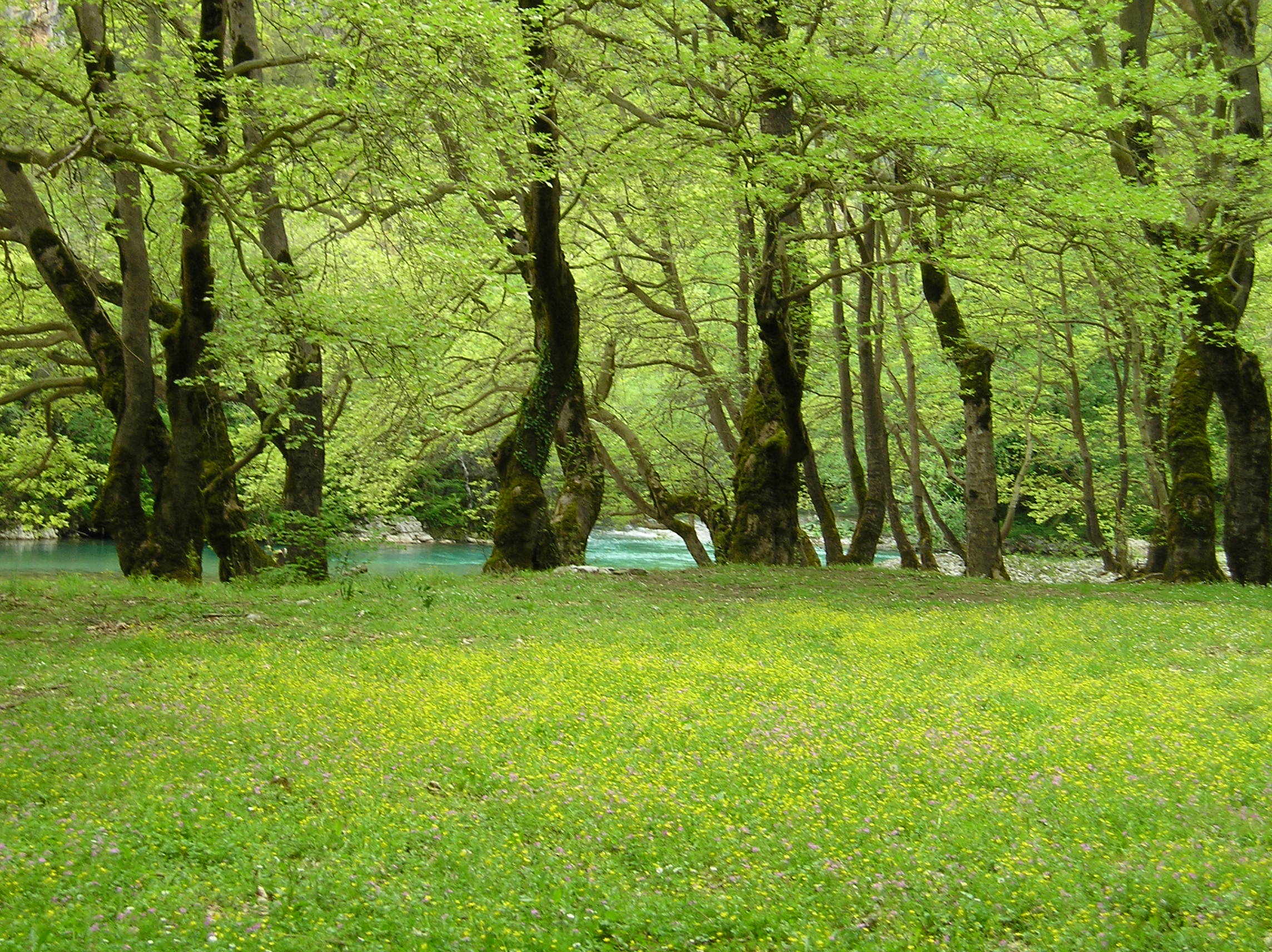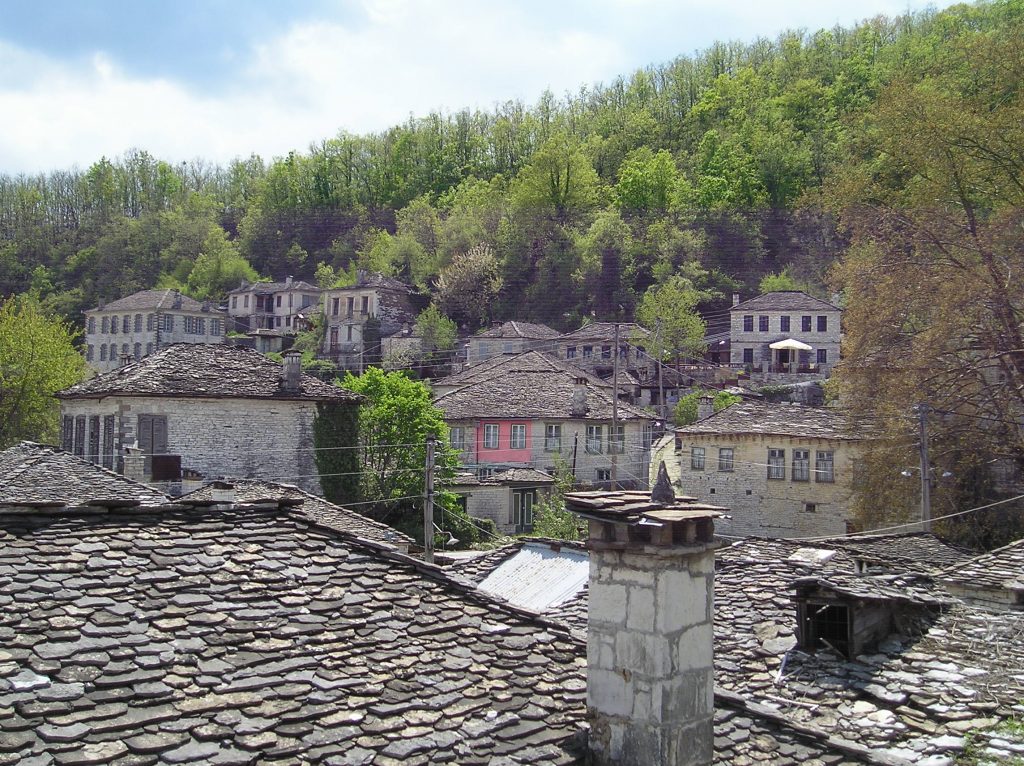The monastery of St Dionysios of Olympus is situated in the perfecture of Pierria, 3 km from the town of Lithochoro.
I had the pleasure to visit the monastery twice in the recent months (as well as the nearby town of Litochoro, which I’m also sharing about today).
I first visited last December when I traveled to Edessa and Pozar baths (I will be sharing about those amazing places soon, by the way!) and my second visit was during my trip to Salonica (Thessaloniki) last January.
The monastery was very quiet, and I only got to see one monk in the whole place! I later discovered that there is a restricted area where the monks live and work, which is not accessible to visitors. So, I guess they were all busy at the time! Apparently, they have many talents. They create icons, woodcraft, incense, candles and also pass the time gardening, binding books, tending to bees and even making cheese!
It is no surprise, therefore, that their gift shop, situated near the entrance, is one of the most interesting I have ever seen in a monastery, offering a wealth of different kinds of merchandise, including incense in various heavenly aromas, dried herbs, and, yes, cheeses too, and other delicatessen items. I came out carring bags of various lovely things, and I only wish they had an e-shop so I can restock 🙂
There were various buildings to admire as we walked around, with the operational church being by far the most prominent structure. The decoration inside, and the large icons of Jesus and the Virgin Mary before the templon were impressive.
In a small chapel inside the church on the right side, there is also a big icon of St Dionysios.
The monastery had beautiful greenery and pots with vibrant flowers, making it a pleasure to photograph. We ambled here and there, listening to birdsong, being surrounded by forestland. The only people were those in our coach group. Both times, the experience was the same, and just as enchanting.
Going up some steps, we visited the museum that is housed in a small building, manned by one monk, who sat near the entrance at a desk, screens before him, surveilling all the different spaces via cameras. It was an odd sight, and quite a striking contrast, to see a monk handling the high technology of today, but that was soon forgotten, once I ventured further inside where I got to marvel at the religious artifacts and the relics on display.
Truly, never before, had I seen so many housed in one place.
The artifacts were intricate, so beautiful and impressive, and the holy relics were more than I could imagine I would ever see – all belonging to various saints and even apostles.
It was forbidden to take photographs in there but you can see some of the artifacts on this page of the monastery’s website.
The monastery was founded in 1950 after the destruction of the original monastery by the Germans in 1943 at a different location, in the gorge of Enipeas river. The ruins still stand today. St Dionysios had built the original fortified monastery in 1542.
During his life, the saint lived in many different caves on Mt Olympus. His holy relic lies today in a grave inside one of those caves, and there is also a spring with holy water. According to the monastery, to this date, the miracles the saint performs continue as he answers the prayers of the faithful…
GO HERE to see all my photos from the monastery.
Litochoro was stunning… Beauty everywhere…
Hard to believe that a town so near Mt Olympus is also near the sea!
I never got to see its coast, but during my visits there I had a good wander around and encountered the beauty of nature in all its glory. Majestic snowcapped mountain peaks, tall forest trees, a river, and even a large reservoir awaited me there, all gleaming under the glorious sunlight.
At the main car park where our coach left us, there is a paved path that leads to lower ground.
It led us to Enipeas river, after just a couple minutes’ walk. At its bank, visitors can enjoy food and drink at two quaint cafes as well as a restaurant run by a coop of the local women of the town.
It was a beautiful place to walk around in and enjoy the beauty of nature.
But that wasn’t all. We also found a stunning park next to the town’s maritime museum, just a stone’s throw away from the car park.
It had a large body of water that made it really special. Apparently, this vast reservoir is not for swimming, hence it’s fenced all around. The water is used for irrigation purposes.
Edged by forest trees, the park was the perfect place to sit on a bench after a slap up meal, listen to the chirping birds and gaze at Mt Olympus. Its peaks were snowcapped, a marvel to behold.
I felt really envious of the locals. City folk may feel blessed enough if they can sit at a park in their town with a fountain nearby, gazing at a few trees. The people of Litochoro have a large reservoir at the center of this massive green space, and the majestic Mt Olympus, no less, to rest their eyes upon. Truly fortunate folk!
Wow, right?
As I stated earlier, I visited Litochoro twice in the recent months. I plan to return to Macedonia again and again (many places I’ve always wanted to see over there!) and as Litochoro offers a well-timed stopover for lunch on the way back to Athens I look forward to stopping by there again, half a chance I get.
If you happen to be in the area, do not miss the chance to discover it too. The people are hospitable, and the food on offer at the restaurants makes my mouth water just thinking about it.
We went to the restaurant ‘Hairi’ on the roundabout the first time (you’ll see it all decorated for the holidays in the photographs). It’s at the end of the uphill road that you get to if you turn right from the car park. A short walk away of less than 5 minutes. Well, it depends on how hungry you are, I guess, LOL
The second time, we went to the restaurant ‘Ta Mezedakia’ that is situated right at the edge of the car park. It’s very popular, so if you want to go there, don’t go wandering first and leave it for later. As we sat at its tiny balcony, there were people standing on the other side of the railing on the street, waiting for us to finish so they could come sit. There is a large seating area inside and it was all packed!
I combined both visits into one set of photographs, and I included ones of both the restaurant buildings. This way you can go straight to them if you’re ever there. Either of them will satisfy you if you have a serious case of the munchies like we did LOL
GO HERE to see all my photos from Litochoro.
YOU KNOW WHAT THEY SAY… SHARING IS CARING! Tweet this to spread some love:
Beautiful nature at Litochoro and a monastery on Mr Olympus #Greekblog #traveler #travelGreece Share on X

